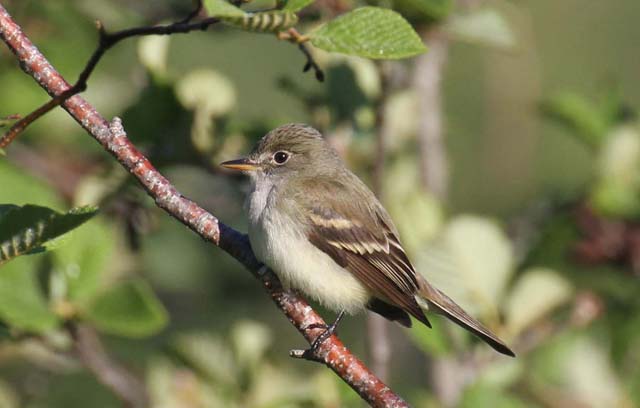Jon Dunn on the conclusion of his tour, Maryland and West Virginia: Birding the Civil War
Our tour this year encountered plenty of wet weather, but much of it fell in the evening, so apart from a crimp in our night birding, we were blessed with good weather on the battlefields during the day and for the most part while birding.
Our historical days were spent at Gettysburg, Antietam, Harpers Ferry and environs, and for an hour at Droop Mountain south of Hillsboro, West Virginia. We spent our first full day at Gettysburg, the site of the deadliest of all battles of the American Civil War. We covered the entire battlefield and attended well-delivered hour long Ranger talks that covered the events of each day. Much of the second day we were at Antietam, the site of the deadliest single day of the Civil War. Lee was very fortunate to avoid the destruction of his Army of Northern Virginia here, a failure as much due to McClellan’s dithering as to Lee’s skill. Our visit of the battlefield basically went from north to south, much as the action had ranged on 17 September 1862. The next morning we birded around Harpers Ferry and spent a few hours in the old historical district. Here at Harpers Ferry John Brown holed up in the Armory for several days in October of 1859. Col. Robert E. Lee, the commander of the Federal troops, eventually stormed the structure and captured him. He was hanged just a few weeks later. Here too, just prior to the battle of Anteitam, Stonewall Jackson shelled the federal garrison from the heights above, eventually resulting in the surrender of 12,500 troops, the largest single surrender of U.S. troops until Bataan in early 1942.
After leaving Harpers Ferry and heading west, most of our time was spent birding. Of course, even on the battlefields we had our binoculars and the birding at all four sites visited was good. At Gettysburg we noted Red-headed Woodpecker at Culps Hill and nearby compared Turkey and Black Vultures at Little Round Top, at Antietam we compared Field and Vesper Sparrows, and near Harpers Ferry we had a lovely singing adult male Blue Grosbeak (scarce in West Virginia) along with a scarce (for eastern West Virginia) pair of Bobolinks and a family group of Grasshopper Sparrows. Matt Orsie’s careful scouting just in advance of our tour greatly helped in finding a number of the scarcer and local species during the tour including 28 species of wood warblers, missing only (of the breeders) Nashville which is a very rare and local breeder in West Virginia. These included Blue-winged and the much scarcer Golden-winged, Mourning, Swainson’s and Cerulean. Other highlights included side-by-side Willow and Alder Flycatchers, Olive-sided Flycatcher (a rare apparent southernmost breeding outpost at Cranberry Glades), Henslow’s Sparrow, and Red Crossbill and Purple Finch. The butterflies were excellent too and we tallied some two dozen species including Pink-edged Sulphur and the beautiful Baltimore Checkerspot and Diana Fritillary.

Monument to Robert E Lee at Seminary Ridge, Gettysburg

The famed Cyclorama, the painting that captures Robert E Lee's high water mark on day 3 (Pickett's Charge)of the Gettyburg Battle.

Mourning Warbler

Alder Flycatcher

A male Diana Fritillary
